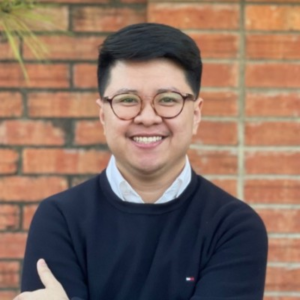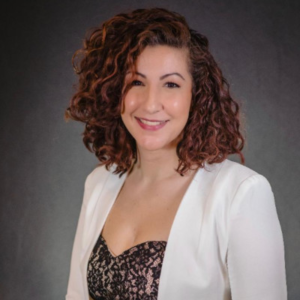Introduction to Change-Making in the Workplace Series
In April, Tufts Career Center’s Career Fellows Ismenia and Jesse moderated a panel on Change-Making in the Workplace. We will be breaking down that conversation into smaller blog posts, but if you are interested in watching the whole panel, you can do so here!
Here is the premise for the discussion: We continue to hear stories of underrepresentation and inequality in and around the workplace. How are companies responding to these longstanding injustices in their own workplaces, society and beyond? Learn about what it means to be a changemaker in the workplace and gain insight into what sort of influence you can have.
Panelists Sharing Thoughts, Insights, and Experiences:
- Reema Elghossain, Vice President at 4A’s Foundation
- Phuong Ta ’16, Executive Search Consultant at Isaacson, Miller
- Gabrielle (Gabby) Thomas ’13, Diversity, Inclusion, & Belonging Program Manager at HubSpot
Challenges in DE&I Work:
What are some of the main challenges that have come up in your respective experiences as you work towards more inclusive, equitable, and diverse workspaces?
 Gabby: People will talk to me and say, “Oh we’re trying to start ERGs at our company” or “We’re trying to embark on this strategy” and that is when I see the resource issue come up a lot. You have to make sure that the resources are there, because if there’s no resources to work with then what are we doing? You have to make sure that the onus and accountability is not on one central person, which is impossible because you are not the sole decision maker unless you own the company, it should not just be on you. And really making sure that everyone understands how they can get involved and how we’re holding people accountable. I’m so glad that at HubSpot we really formally started this work 2015, so I feel like we’re in like a different phase now. This is really great for us because we have the leadership buy-in, we have the resources, we have a whole built out team, and it’s like continuing to grow.
Gabby: People will talk to me and say, “Oh we’re trying to start ERGs at our company” or “We’re trying to embark on this strategy” and that is when I see the resource issue come up a lot. You have to make sure that the resources are there, because if there’s no resources to work with then what are we doing? You have to make sure that the onus and accountability is not on one central person, which is impossible because you are not the sole decision maker unless you own the company, it should not just be on you. And really making sure that everyone understands how they can get involved and how we’re holding people accountable. I’m so glad that at HubSpot we really formally started this work 2015, so I feel like we’re in like a different phase now. This is really great for us because we have the leadership buy-in, we have the resources, we have a whole built out team, and it’s like continuing to grow.
For us the big challenges are on the global diversity, global DI&B strategy. Transparently, all the DI&B team is based out of the US, but we have offices in 8 or 9 other countries and we’re all about being global first. This is a big turning point for us on what does that mean, because it’s not a copy and paste strategy. We’re really trying to get it, especially in Europe that’s our second biggest office, as we think about okay, how do we actually create the resources that are going to empower teams in those regions to pick up the baton and do the next leg of the race? What does that actually look like and so we’re really trying to dive in. And it’s only about who’s in the room too, right? If all your leadership is located in one particular region, that’s going to really skew how DI&B is implemented, what the strategy is going forward, but it’s also the smaller things too. Thinking about how we usually send resources to managers and teams and stuff and asking are all of our resources out of publications in the US? How can we also make sure that we’re keeping ourselves up to date about what’s going on and ultimately affecting all of our employees because they don’t just only exist in the US, so the global DEI work is the big challenge for us this year.
 Phuong: Thinking about my particular kind of work, because I do recruit people, I do work with a lot of people of color or women or folks from backgrounds who might not have been given the opportunity to be in leadership position before. The challenge I see when I’m working with my clients is that they might be more drawn towards particular candidates who’ve been in a traditional pathway to leadership, who might come from the Stanfords, Harvards, Tufts, Yales, etc. and they might have bias against schools that they might not deem as prestigious or might not be willing to look beyond a traditional path. So how I can work with them and remind them of that implicit bias that they might have and to consider if they really want commit to change when with conversations, they say they do, but how can they really expand what they deem as the cultural fit. How to get them to really interrogate the implicit bias that they bring into the search. We work with them to make sure that they don’t just want to end up with the same kind of leadership that has been existing in the company for a long time, which is predominantly white male. That’s the kind of work that I do every day and it’s not always easy to have a kind of conversation because at the end of the day I’m still brought in as a consultant, I don’t have decision-making power, but the reason why they work with us is because of those conversations, that we can push them on, that we can nudge them on, that we can remind them on. Not easy work, but I think given everything going on in the country, in the world, recently especially with the national unrest from last year, organizations are now more open to having that conversation. It’s uncomfortable, but they need to have it now.
Phuong: Thinking about my particular kind of work, because I do recruit people, I do work with a lot of people of color or women or folks from backgrounds who might not have been given the opportunity to be in leadership position before. The challenge I see when I’m working with my clients is that they might be more drawn towards particular candidates who’ve been in a traditional pathway to leadership, who might come from the Stanfords, Harvards, Tufts, Yales, etc. and they might have bias against schools that they might not deem as prestigious or might not be willing to look beyond a traditional path. So how I can work with them and remind them of that implicit bias that they might have and to consider if they really want commit to change when with conversations, they say they do, but how can they really expand what they deem as the cultural fit. How to get them to really interrogate the implicit bias that they bring into the search. We work with them to make sure that they don’t just want to end up with the same kind of leadership that has been existing in the company for a long time, which is predominantly white male. That’s the kind of work that I do every day and it’s not always easy to have a kind of conversation because at the end of the day I’m still brought in as a consultant, I don’t have decision-making power, but the reason why they work with us is because of those conversations, that we can push them on, that we can nudge them on, that we can remind them on. Not easy work, but I think given everything going on in the country, in the world, recently especially with the national unrest from last year, organizations are now more open to having that conversation. It’s uncomfortable, but they need to have it now.
 Reema: Well, I’ll say for me, the advertising industry is not diverse at all, it’s really bad. It’s sometimes challenging when I’m working. I have this pretty unique experience where I get to work with a whole bunch of different organizations. I’m talking to agencies and I’m talking to DE&I leaders that work at those organizations and I’m talking to people who care very much and understand and know the needs, but I think it’s really hard to be a DE&I leader within an organization because you’re kind of tasked with almost an impossible task, to have to change an entire organization, but not have very many resources or much power to do anything. Then having to be the face of that and having a lot of people looking to you to make the change is a lot. I think there is a pressure and so it’s not really an easy role. People think DE&I work is glamorous I think, but it’s really hard. So that’s probably one of the most challenging things I would say, is that we can bring programs, we can bring ideas, but it’s not one person’s responsibility to do diversity, equity, and inclusion work. You literally need every single person at an organization to be involved and to be part of it, but the pressure and responsibility is on usually one person or maybe a team. So I think that’s the biggest challenge, making change with not as much power as people think we have.
Reema: Well, I’ll say for me, the advertising industry is not diverse at all, it’s really bad. It’s sometimes challenging when I’m working. I have this pretty unique experience where I get to work with a whole bunch of different organizations. I’m talking to agencies and I’m talking to DE&I leaders that work at those organizations and I’m talking to people who care very much and understand and know the needs, but I think it’s really hard to be a DE&I leader within an organization because you’re kind of tasked with almost an impossible task, to have to change an entire organization, but not have very many resources or much power to do anything. Then having to be the face of that and having a lot of people looking to you to make the change is a lot. I think there is a pressure and so it’s not really an easy role. People think DE&I work is glamorous I think, but it’s really hard. So that’s probably one of the most challenging things I would say, is that we can bring programs, we can bring ideas, but it’s not one person’s responsibility to do diversity, equity, and inclusion work. You literally need every single person at an organization to be involved and to be part of it, but the pressure and responsibility is on usually one person or maybe a team. So I think that’s the biggest challenge, making change with not as much power as people think we have.
And adding on to what Phuong was saying, it’s a game of inches, it’s not a game of miles. Change is slow because of what Phuong just shared. One reason is because you have to explain what’s happening and then what the changes that need to be made are. A lot of industries love data, but data only tells one part of a story and you could use data to really make up whatever story you want. I work in advertising, so I’ve seen it, but to be able to talk, like I speak to my CEO about pay equity and she believes in pay equity and she wants pay equity, but she doesn’t even understand if there is pay equity or not. So, you have to walk them through that part first, like Phuong said, it’s hard to talk about bias because a lot of people don’t want to feel like they have it. It’s a really hard to get buy-in and you have to be okay with just moving one inch at a time and that’s not always what the head of the organization wants, it’s also not what the people want but that’s literally sometimes that’s the only thing you can do.

